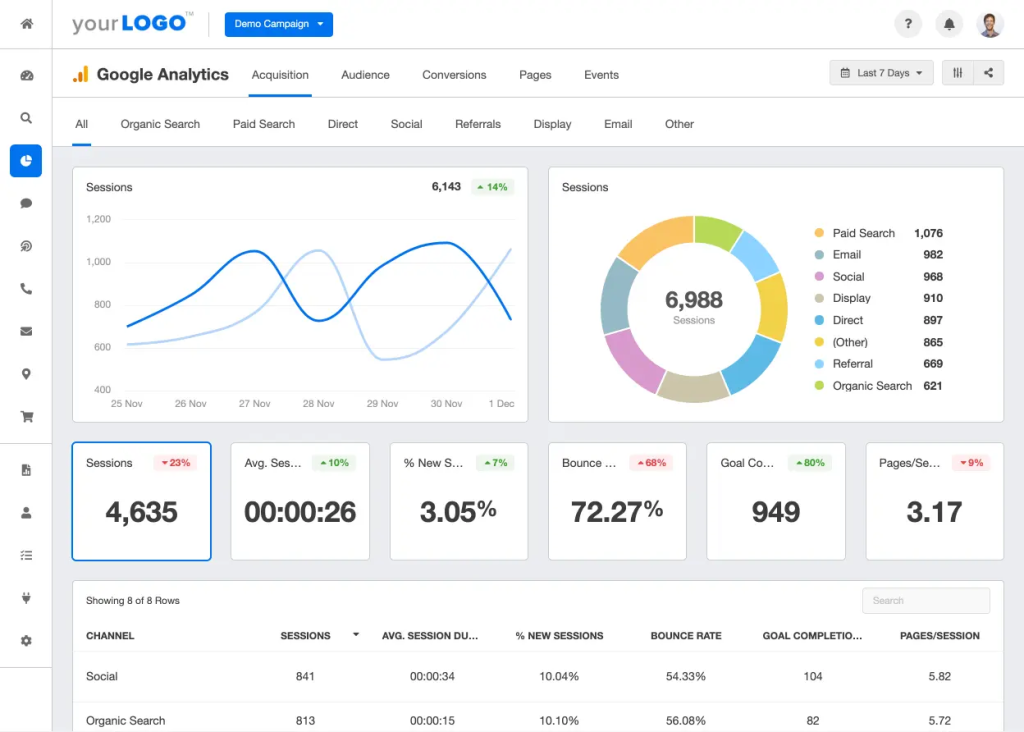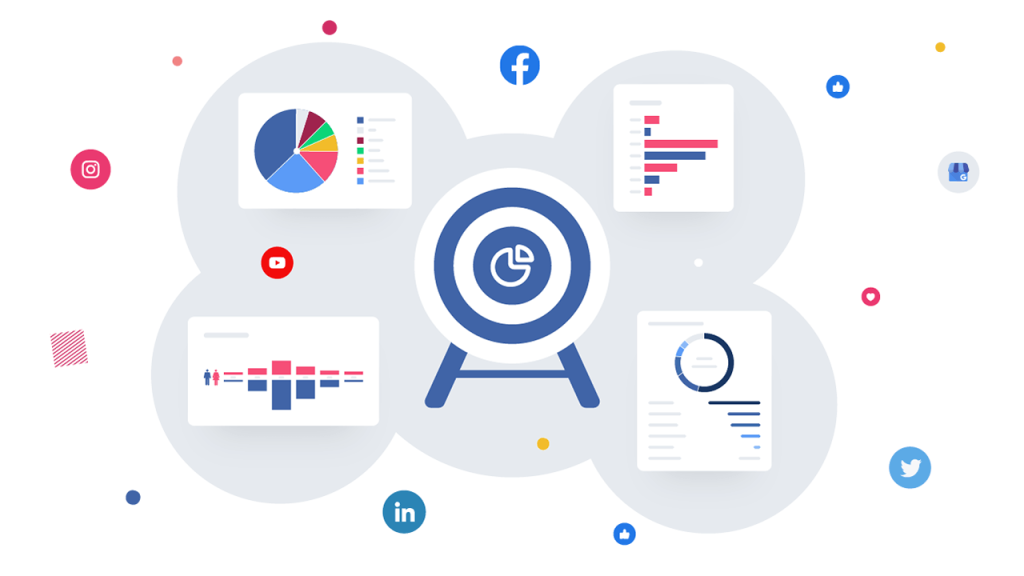
Peek Into the Blog:
Are you ready to unlock the secrets of digital success? This blog post delves into why a robust digital presence is no longer optional but essential for businesses. From real-time social media engagement to leveraging SEO and influencer collaborations, this guide will provide actionable insights to boost your brand’s visibility, engage customers, and drive growth. Discover how to outshine your competition and adapt to the ever-evolving consumer behavior. Whether you’re a small business or an established brand, this guide offers invaluable strategies to elevate your online footprint and thrive in today’s digital age.
Why Digital Presence Matters
In today’s digital age, having a strong online presence is no longer an option but a necessity for businesses of all sizes. According to a Forbes article, a digital presence provides an ideal platform to communicate with consumers and set the narrative for your brand.
Digital presence facilitates meaningful interactions with customers, leading to increased engagement and loyalty. Through social media platforms, businesses can directly communicate with their audience, address customer queries, and provide personalized support (Enty.io).
Examples of Digital Presence
Social Media Engagement

Platforms like Facebook, Instagram, and Twitter allow businesses to engage with customers in real-time. For instance, a local bakery can use Instagram stories to showcase their daily specials, encouraging customers to visit their store.
Content Marketing

A blog on your website can provide valuable information to your audience. For example, a fitness brand could post articles about healthy eating and workout tips, positioning themselves as an authority in their niche.
Building Brand Awareness
A strong digital presence helps businesses reach more people and build stronger brand awareness.The right content and promotion can help you reach a larger audience. This increased visibility can significantly impact your business’s growth and profitability.
Enhanced Visibility and Reach: By having an online presence, your business becomes more accessible to a global audience. This is particularly important for small businesses looking to expand their reach beyond local markets.
Examples of Brand Awareness
SEO and Content Strategy

A well-optimized website with high-quality content can attract more visitors. For example, an eco-friendly product company can create blog posts about sustainable living, drawing in environmentally conscious consumers.
Influencer Collaborations

Partnering with influencers in your industry can also boost your brand’s visibility. A fashion brand collaborating with a popular influencer can reach thousands of potential customers in a single post.
Customer Engagement and Feedback
A digital presence allows businesses to engage with customers in various ways, such as through social media, email marketing, and online reviews. This engagement is crucial for building long-term relationships with customers.
Increased Customer Engagement and Feedback: Engaging with your customers online can provide valuable insights into their preferences and expectations. This feedback can help you improve your products or services and better meet customer needs.
Examples of Customer Engagement
Social Media Campaigns

Interactive campaigns like polls, quizzes, and giveaways can boost engagement. For instance, a restaurant could run a contest asking followers to share their favorite dish for a chance to win a free meal.
Email Marketing

Personalized email campaigns can keep your customers informed about new products, promotions, and events. An online retailer could send targeted emails based on past purchase behavior, offering personalized recommendations and discounts.
Competitive Advantage
A strong digital presence can give your business a significant competitive advantage. It allows you to stay ahead of competitors by being more accessible and visible to potential customers. According to Medium, a robust online presence positions your brand or business as a frontrunner and showcases adaptability.
Gaining a Competitive Edge: By being active online, you can quickly respond to market changes, customer inquiries, and feedback. This agility can set you apart from competitors who may not be as responsive or accessible.
Examples of Competitive Advantage
Online Reviews and Testimonials

Encouraging satisfied customers to leave positive reviews on platforms like Google and Yelp can enhance your credibility and attract more customers. A local coffee shop could benefit from glowing reviews, drawing in new patrons looking for a great coffee experience.
E-commerce and Digital Sales

An online store can help you reach customers who prefer shopping from the comfort of their homes. For example, a boutique clothing store with an e-commerce site can sell to customers nationwide, not just those who visit their physical location.
Adapting to Consumer Behavior
Consumer behavior has shifted dramatically towards online research and purchasing. According to a study by Think with Google, 73% of mobile searches trigger additional actions, such as a store visit or a purchase. This highlights the importance of having a mobile-friendly website and being easily discoverable online.
Meeting Consumer Expectations: Modern consumers expect businesses to have an online presence where they can find information, read reviews, and make purchases. Failing to meet these expectations can result in lost sales and diminished brand reputation.
Examples of Adapting to Consumer Behavior
Mobile Optimization

Ensuring your website is mobile-friendly can improve user experience and increase conversions. For instance, a restaurant with an optimized mobile site can attract more customers who are searching for nearby dining options on their smartphones.
Online Customer Service

Offering live chat support on your website can enhance customer satisfaction by providing instant assistance. An electronics retailer could use live chat to help customers with product questions, leading to higher sales and reduced return rates.
Measuring Success
A key advantage of a digital presence is the ability to measure and analyze your efforts. Tools like Google Analytics, social media insights, and email marketing metrics provide valuable data on customer behavior and campaign performance. According to Experian, one of the biggest benefits of building your online presence is the vast amount of data you’ll be able to source.
Data-Driven Decision Making: By analyzing this data, you can make informed decisions to optimize your digital marketing strategies, improve customer engagement, and drive better business outcomes.
Examples of Measuring Success
Google Analytics

Tracking website traffic, user behavior, and conversion rates can help you understand what’s working and what needs improvement. An online retailer can use this data to optimize their product pages and increase sales.
Social Media Insights

Analyzing metrics like engagement, reach, and follower growth can help you gauge the effectiveness of your social media campaigns. A fitness brand could use these insights to refine their content strategy and attract more followers.
Leveraging Digital Marketing
Digital marketing encompasses various strategies, including SEO, content marketing, social media marketing, and email marketing. These strategies can help you reach your target audience, drive traffic to your website, and convert visitors into customers. According to SharpLaunch, enhancing your digital presence gives you the freedom and flexibility to seize new opportunities as they arise.
Cost-Effectiveness and Efficiency: Digital marketing is often more cost-effective than traditional marketing methods, allowing you to reach a larger audience with a smaller budget.
FAQs: Answering Common Questions
What are the best ways for a business to start building a digital presence?
Starting with a professional website, creating social media profiles, and engaging in content marketing are effective ways to begin building a digital presence. Consistently updating and interacting on these platforms is key.
How can small businesses manage their digital presence effectively?
Small businesses can manage their digital presence by leveraging tools like social media management platforms, scheduling posts in advance, and engaging with customers regularly. Outsourcing tasks to digital marketing agencies can also be beneficial.
How important are online reviews for a business’s digital presence?
Online reviews are extremely important as they can significantly influence potential customers’ decisions. Encouraging satisfied customers to leave positive reviews can enhance credibility and attract more business.
How does SEO impact a business’s digital presence?
SEO improves a business’s visibility in search engine results, driving organic traffic to the website. This increased visibility can lead to higher brand awareness and more potential customers.
What role does content marketing play in building a digital presence?
Content marketing helps establish a business as an authority in its industry. Providing valuable content to your audience can attract and retain customers, and improve engagement and trust.
Why is digital media important for business?
In conclusion, digital media is a powerful tool to help your business succeed. Whether you’re looking to promote your brand, sell products, or connect with your audience, digital media will help you reach them where they live.
How can a small business benefit from having an online presence?
An online presence enhances accessibility and reaches a wider audience. It allows small businesses to compete with larger companies by providing a platform to showcase their products and services, engage with customers, and build a loyal customer base.
Conclusion
In conclusion, having a strong digital presence is crucial for any business looking to succeed in today’s competitive landscape. From building brand awareness and engaging with customers to gaining a competitive edge and leveraging digital marketing, the benefits are immense. By prioritizing your digital footprint, you can drive business growth, enhance customer satisfaction, and stay ahead of the competition.
Thank you for taking the time to read this comprehensive guide on the importance of digital presence for business. We hope you found it informative and helpful. If you have any questions or need further assistance, please don’t hesitate to reach out.




